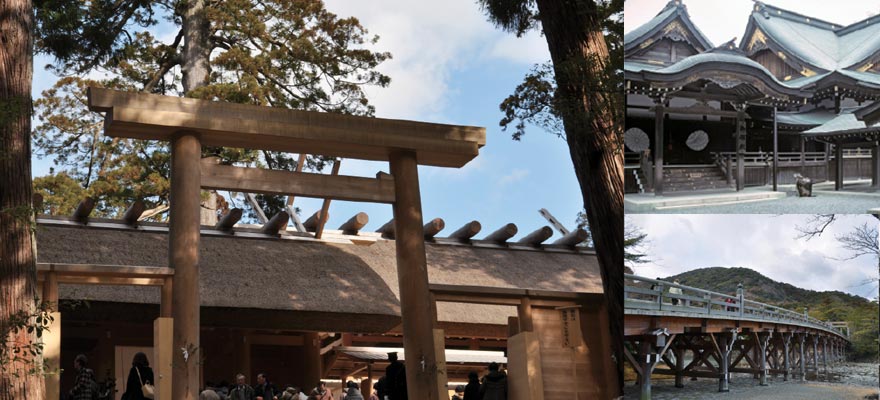Home > Highlighting JAPAN >Highlighting Japan March 2014> 47 Prefectures from A to Y
Highlighting JAPAN
47 Prefectures from A to Y
MIE
Ninja and the goddess of the sun

There's something a little bit magical about Mie Prefecture. Positioned between Nagoya and Kyoto – at what might be called the nexus of eastern and western Japan — it's here that Shinto's supreme deity, the goddess Amaterasu, is venerated, and also here that the famed Iga-ryu school of ninjutsu was born.
Ise-jingu Shrine is the home of Amaterasu: goddess of the sun, first among the countless gods of the Shinto pantheon. Over five million people make pilgrimages to the shrine every year. As they cross the Uji Bridge at the shrine's entrance, they're said to cross the border between the human world and the world of the gods.
"Have you ever seen a kami?" Ise-jingu guide Yoko Hasegawa asks, using the Japanese word for 'god.' "You haven't, right? But to come here is to feel them in your heart."
Originally built around 2,000 years ago, the inner-most sanctum of Ise-jingu is accessible only to the selected few. Still, the grounds and buildings have an ancient majesty that harmonizes with the surrounding trees and stones, the placid Isuzu River flowing gently alongside. The cypress structures are marvels of Japanese carpentry, constructed using only wooden joints without any nails. Touching the stately cypress torii gate at the end of Uji Bridge, you can almost feel its power.
At the entrance to the shrine grounds, Hasegawa demonstrates the ceremonial washing ritual: left hand, right hand, then rinse your mouth with water poured into your left hand, rinse that hand again, then let the remaining water run over the handle of the dipper so that it's clean for the next person. "Washing the hands symbolizes cleansing the body," Hasegawa says, "while washing the mouth symbolizes cleansing the heart, so that you are ready to meet the gods with a clean spirit."
Spiritually refreshed, we repair to Okage Yokocho, a merchant's quarter adjacent to the shrine grounds. In stark contrast to the reserved and reverential atmosphere of the shrine, this sector is bustling with activity, steam and cooking smoke billowing from open fires at the many street stalls hawking freshly cooked local delicacies. Visitors can get Mie specialties like tekone-zushi (skipjack tuna over vinegared rice), or the famed akafuku, which is made of mochi (soft rice cake) covered in swirls of sweet red bean paste.
Stomachs sated, we journey northward to Iga City and the Museum of Iga-ryu Ninja. Iga City is home to the famed Iga school of ninjutsu, the art of the ninja. Historical ninja often posed as farmer, but were also skilled in making gunpowder and medicine, as well as producing illusions and other tricks that seemed like magic. At the museum, you can see the way ninja practiced their craft, versed in the arts of covert warfare, assassination, espionage and other hidden techniques. Guides dressed as ninja reveal the secret passages and false panels of a ninja house and also perform feats of balance and cunning with famous ninja tools like throwing stars. Museum exhibits display authentic ninja artifacts like costumes and weaponry and pass down a few secrets from these stealthy, agile warriors.
The kanji for Mie, 三重, means 'three layers.' You may indeed have to dig a little to uncover Mie's layered treasures, but its magic is worth the effort.
© 2009 Cabinet Office, Government of Japan






